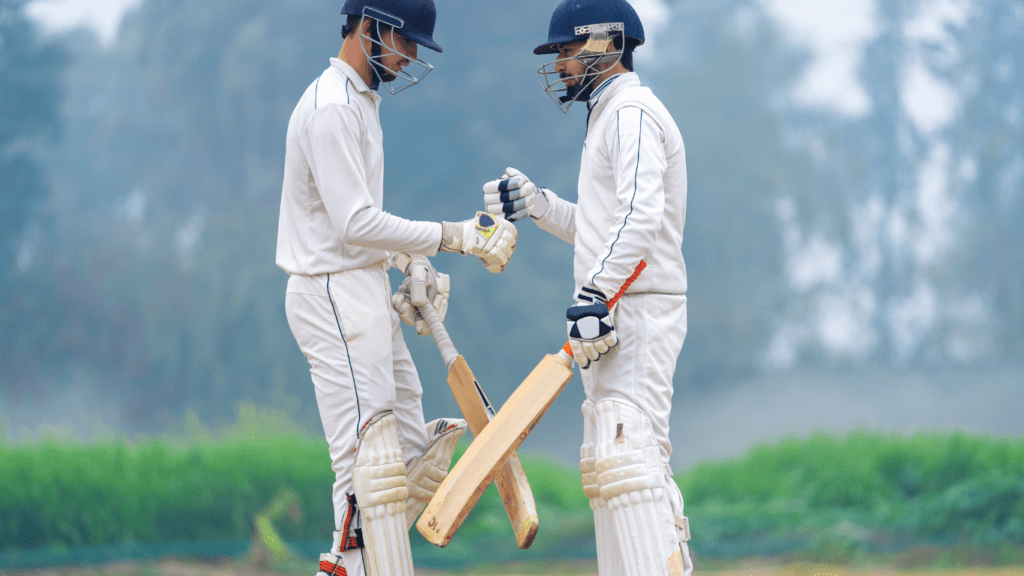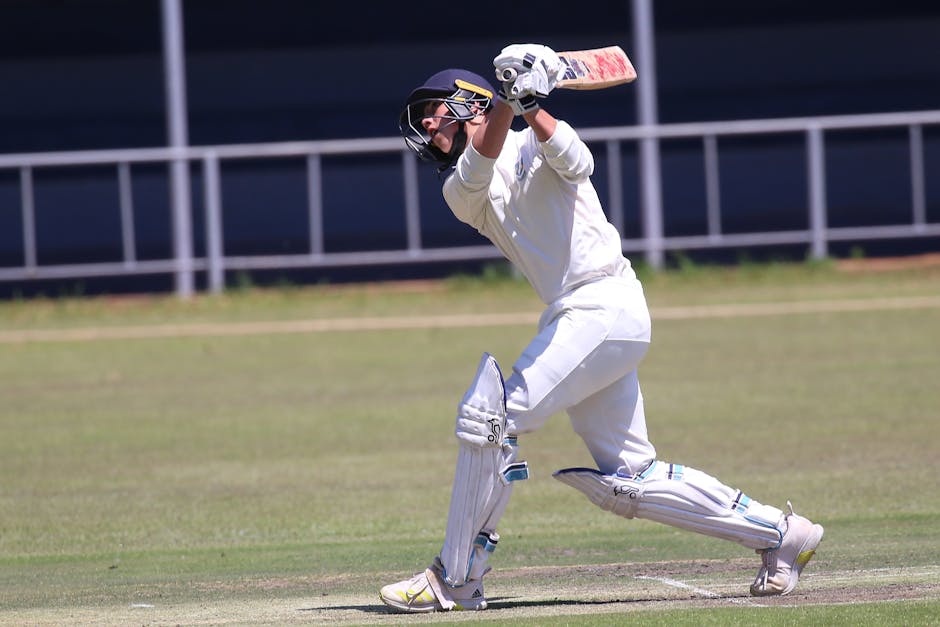Understanding the Basics of Cricket
Grasping cricket fundamentals is essential for making informed betting decisions. I focus on core elements like rules and key players to build a solid foundation.
The Rules of the Game
Cricket’s rules may appear complex, but understanding them is vital. The game consists of two teams with 11 players each.
Matches have different formats: Test, One Day International (ODI), and Twenty20 (T20). Test matches last up to five days, ODIs span 50 overs per side, and T20s comprise 20 overs per team.
Each team takes turns batting and bowling. The batting side aims to score runs by hitting the ball and running between the wickets, while the bowling side tries to dismiss the batsmen by hitting the stumps or catching the ball.
Knowing these rules helps analyze match outcomes better.
Key Players and Their Roles
Identifying key players enhances betting strategies. Every team has players with specific roles:
- Batsmen: Specialists in scoring runs (e.g., Virat Kohli, Joe Root).
- Bowlers: Experts in taking wickets (e.g., Jasprit Bumrah, Mitchell Starc).
- All-rounders: Capable in both batting and bowling (e.g., Ben Stokes, Shakib Al Hasan).
- Wicketkeepers: Skilled at catching and stumping (e.g., MS Dhoni, Jos Buttler).
By understanding players’ strengths and roles, you can predict how they might perform in various conditions.
Analyzing Team Performance
Analyzing team performance provides key insights for better betting strategies. Dive into historical and current data to uncover patterns and trends that can influence match outcomes.
Historical Analysis
Examine how teams performed over the years. Look at wins, losses, and draws.
Identify performance in different formats: Test, ODI, and T20. Check head-to-head records against opponents. Notable long-term data includes:
- Win/Loss Ratios: Analyze ratios in various formats, noting differences in performance.
- Venue Performance: Note how teams perform in specific countries and stadiums.
- Seasonal Trends: Track performance across different seasons and tournaments.
Historical analysis identifies consistent strengths and weaknesses, allowing for more accurate predictions.
Current Form and Recent Results
Current form reveals a team’s momentum. Assess the last 5-10 matches for trends. Recent victories or losses indicate current morale and performance levels. Consider:
- Recent Wins/Losses: Note consistency in recent game outcomes across formats.
- Injuries: Monitor player availability and potential impact from any injuries.
- Player Form: Check key players’ recent performances, including batting averages and bowling figures.
By evaluating current form, you gauge a team’s readiness and potential performance in upcoming matches.
Player Statistics and Their Impact

Analyzing player statistics informs betting decisions in cricket. Evaluating detailed metrics for different player roles helps predict match outcomes more accurately.
Batsmen and Bowlers Performance Metrics
Batsmen performance includes runs scored, strike rate, and average. For instance, a batsman with a high average and strike rate consistently contributes to the team’s score.
Analyze their performance in different conditions, as some excel on particular pitches or against certain bowlers.
Bowlers have metrics like economy rate, strike rate, and average. A bowler with a low economy rate restricts runs, while one with a low strike rate frequently takes wickets.
Evaluate their performance in various formats and conditions to understand their impact on the game.
Analyzing Fielding and Captaincy
Fielding statistics such as catches, run-outs, and fielding percentage reflect a team’s defensive strength. A team with high fielding efficiency often saves crucial runs and creates more wicket-taking opportunities.
Captaincy influences game strategy and player morale. Analyze a captain’s win/loss record, decision-making during pressure situations, and ability to manage resources.
Effective leadership often translates to better team performance, affecting the betting outcome.
By focusing on these metrics, I refine my cricket betting strategies with deeper insights into player roles and performance.
Environmental Factors Affecting the Game
Understanding environmental factors is crucial for making informed bets in cricket. These factors can influence team performance and match outcomes.
Weather Conditions
Weather plays a significant role in cricket matches. Rain can interrupt games, leading to reduced overs and modifying the Duckworth-Lewis-Stern (DLS) method calculations.
Cloud cover often aids swing bowlers, while sunny conditions usually favor batsmen. Humidity can impact ball movement, making it difficult for bowlers to grip.
Pitch Analysis and Venue History
Analyzing the pitch is essential for predicting match outcomes. Green pitches typically favor fast bowlers, offering movement and bounce. Dry pitches assist spinners, causing the ball to turn sharply.
Reviewing past matches at the venue can reveal patterns.
For example, at Eden Gardens, teams batting second often have higher success rates. Understanding how pitches behave over five days in Test matches helps in making better bets.
Utilizing Betting Odds and Tips
Analyzing market odds and consulting expert tips are essential for making better cricket bets. These elements provide insights into potential match outcomes and betting value.
Reading the Market Odds
Understanding market odds helps assess potential returns and the likelihood of outcomes. Bookmakers offer numerical odds reflecting their predictions.
For example, an odds of 3.0 means a $10 bet could return $30. Comparing odds from multiple bookmakers identifies the best value.
Monitoring market shifts can indicate changes in team favorability based on recent news or performance.
Tips from Experts and Consensus
Experts provide analysis and predictions based on deep cricket knowledge. Examining tips from reputable sources like former players or statisticians can uncover nuanced insights.
Consensus tips, formed from multiple expert opinions, offer a broader perspective on expected outcomes. Following aggregate tips often provides balanced viewpoints, minimizing individual bias.


 Charlessen Hitchcockiee is the visionary founder behind Play Daily Win Big, a leading platform dedicated to delivering the latest in betting and gaming news. With a deep-rooted passion for the gaming industry, Charlessen has built a reputation for providing insightful analysis and valuable updates that cater to both casual players and industry experts. His extensive knowledge spans market trends, regulatory changes, and strategic gaming tips, making Play Daily Win Big a trusted resource for its audience.
Charlessen Hitchcockiee is the visionary founder behind Play Daily Win Big, a leading platform dedicated to delivering the latest in betting and gaming news. With a deep-rooted passion for the gaming industry, Charlessen has built a reputation for providing insightful analysis and valuable updates that cater to both casual players and industry experts. His extensive knowledge spans market trends, regulatory changes, and strategic gaming tips, making Play Daily Win Big a trusted resource for its audience.
